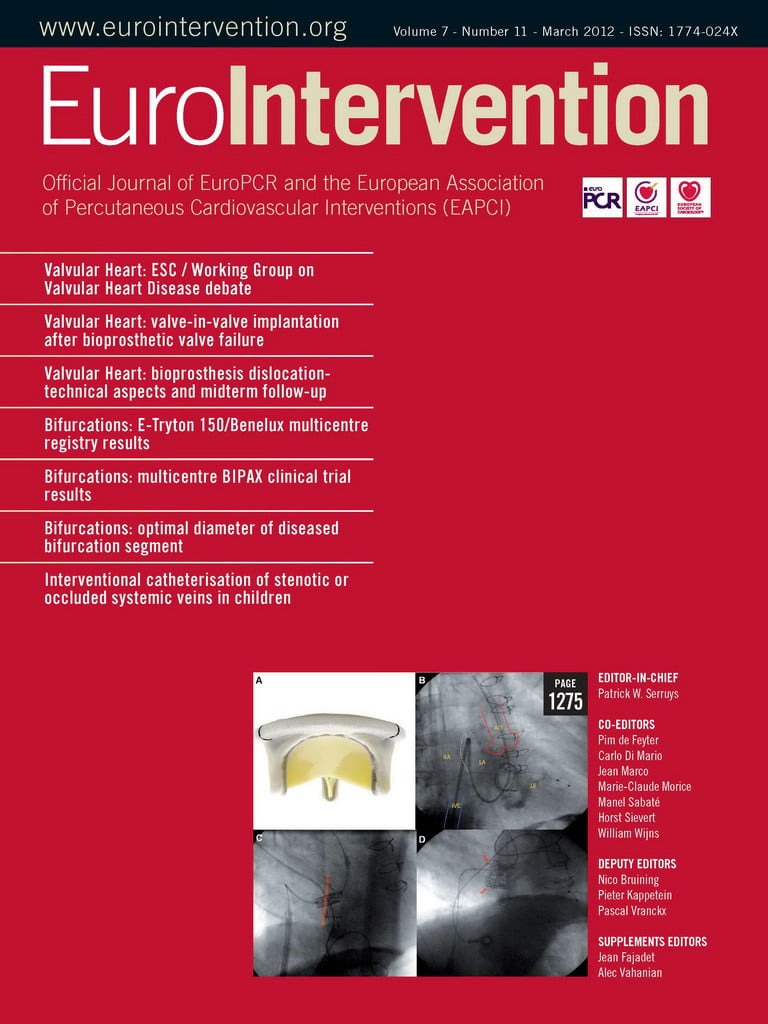Dear Colleagues,
I am just back from the Cardiovascular Research Technologies meeting (CRT) in Washington, DC and, as always, their sessions on valve and structural heart was very well organised and thought provoking. My first impression concerned the huge gap in numbers of interventions performed that exists between Europe and United States when it comes to performing TAVI, with 16,000 being reported in Europe in 2011. Placing that in the American perspective, you will see that after The PARTNER Trial, the high-risk CoreValve trial recruited only 790 patients.
The Heart Team
While we began by emphasising this enormous difference in numbers between ourselves and the US, there is one thing that is true on both sides of the Atlantic: the widespread acceptance and critical importance of the Heart Team. And though both the European and US guidelines all underline the value of this group approach, it remains Class 1, Level C: consensus expert opinion... Why? Simply, because the concept of the Heart Team has never been tested in a randomised fashion.
Today’s trend is to define the Heart Team well beyond the competence of either the interventionalist cardiologist or the surgeon. The emerging conception of this team approach includes, of course, the imaging specialists, with the increasing use of multislice CT scans to 3D echo. The role of the anaesthetist remains critical, as we try to reduce the depth of anaesthesia, which implies extensive discussions concerning the type of patient and breadth of the treatment. Increasingly, as well, the specialist in geriatric medicine is part of the Heart Team, it is clearly this specialist who is best placed for judging the frailty of the patient; and this concept of frailty is being further refined, moving step-by-step to a more objective assessment based on BMI, hormone levels, etc.
It seems clear to us that today the world has accepted the Heart Team concept. Those who do not want to apply this to their practice are at variance with the accepted norms, deviating from what the medical community wants to do. Additionally, we see that the VARC principle, the recommendations of the Academic Consortium, as also being embraced by the community at large, and increasingly applied to clinical situations.
Ongoing issues
Still, as one would expect, there are complications with TAVI that are yet to be resolved. Stroke is part of the conundrum, where red thrombus, white thrombus, debris of the valve, debris of the aorta, late thrombus on the valve, atrium fibrillation and emboli from the left atrium all playing a role. The general feeling is that it will take a long time before we understand how to respond to this complication –correcting it with either mechanical devices, drugs, or both– in a way that would not make the procedure either more complicated, or even more risky than it is at present. Stroke remains a major issue for the FDA and the regulators in general, and continues to temper, somewhat, their enthusiasm, for the TAVI procedure.
The other challenge facing TAVI is the current discussion concerning the progressive, slow transfer of the therapy to less high risk, more intermediate risk situations. This is a difficult debate, in which the FDA will most likely play a major role since it is coordinating the two important future trials, PARTNER 2 and SURTAVI.
As you might imagine, with all these developments and questions informing today’s clinical debates, it is not surprising to see the current issue of EuroIntervention so deeply concerned with these issues, as the journal has always been at the core of what is happening in the field of structural heart.
An ongoing dialogue
This edition of EuroIntervention features a unique dialogue concerning the state-of-the-art in this field. In an initiative from the ESC Valve Heart group, five questions were asked to three distinct groups –surgeons, valve specialists and interventionalists. Each group answered separately the same questions, while commenting on the responses of the other groups, resulting in a very lively dialogue. We welcome the initiative from these three valve groups, and are very happy that these three independent groups have decided to participate in this open endeavour. What is remarkable in this document is the interaction of the participants, where everybody freely, objectively and constructively comments.
While this discussion is at a more general, almost philosophical level, we are also publishing several technical papers as well, including one by Latib et al on the Milan experience with transcatheter valve-in-valve implantation using the Edwards SAPIEN device in patients with bioprosthetic heart valve failure. This was especially interesting to me in the context of the CRT meeting, where I was pleasantly surprised to see an initiative from Europe –Investigator driven– where the authors collected all their valve-in-valve interventions when faced with failure of biological prostheses implanted by surgeons. It was, for me, an eye-opener, seeing how this problematic and difficult issue was treated by these investigators, and I was impressed by the fact that clinicians from all over Europe collected and created this detailed database without support of any official organisation.
Thus, it is not just in the concept of the Heart Team, or in our ongoing debated and discussions but in so many aspects of our clinical lives that we are working well together, and this can only be good for the future. Thank you for joining us.

